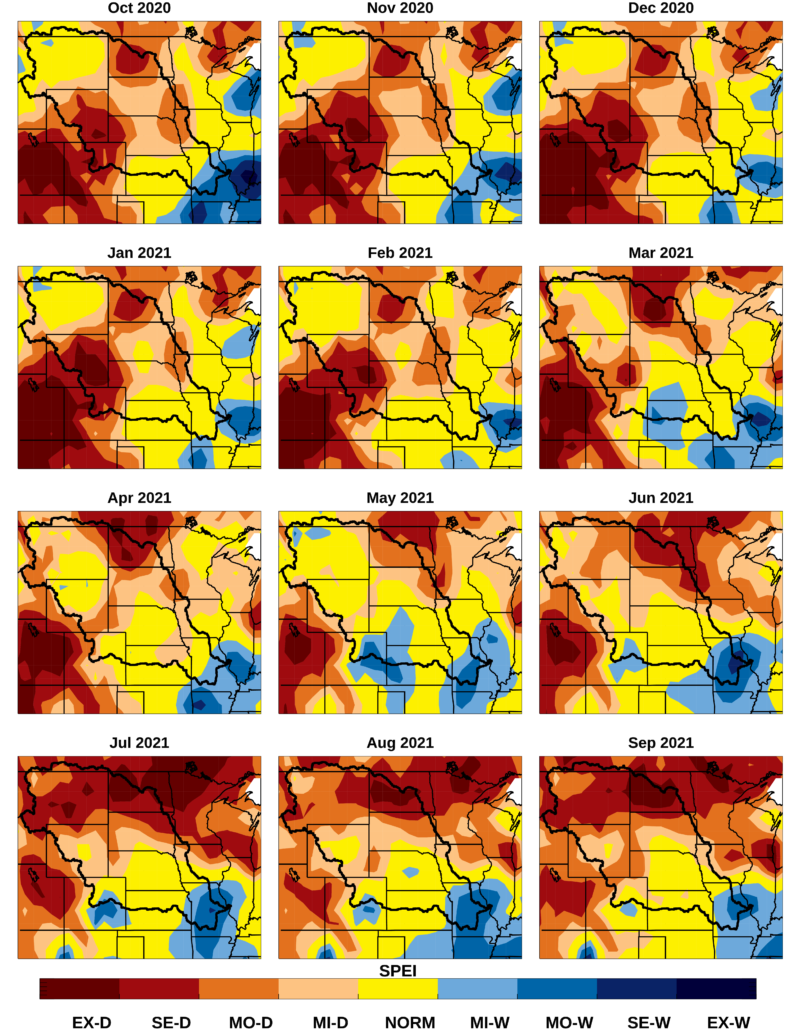Monthly Standard Precipitation-Evapotranspiration Index (SPEI) from CSIC at a 1.0° x 1.0° grid for the last 12 months are used. The data are available from January 1950 through the last updated month of the current year. The SPEI is calculated by two different methods, one using the Penman-Monteith potential evapotranspiration (PET) equation (SPEIbase), and one using the Thornthwaite PET equation (SPEI). The SPEIbase requires more input parameters, which are not always available at the most current time and, therefore, is best suited for long-term climatological analysis. The SPEI only requires basic input parameters which are readily available at the current time, so it is better suited for use in present conditions. Accordingly, SPEIbase correlations were used to display past conditions and SPEI is used here for present conditions. Both versions — SPEIbase and SPEI — are also calculated at different timescales. A thorough analysis was carried out of global correlations between the PDSI and different timescales of SPEIbase to determine the timescale with the best comparison and equivalency to the PDSI. SPEIbase calculated at the 9-month time-scale resulted in the strongest global correlations, and was used for the past conditions. Additionally, a comparison of the SPEIbase at the 9-month time-scale and the SPEI at the 9-month time-scale was done to check agreement between the SPEIbase and SPEI datasets. In the following figure, the scale is defined as extreme (EX), severe (SE), moderate (MO), mild (MI), and normal (NORM) with (D) indicating dryness and (W) indicating wetness.
